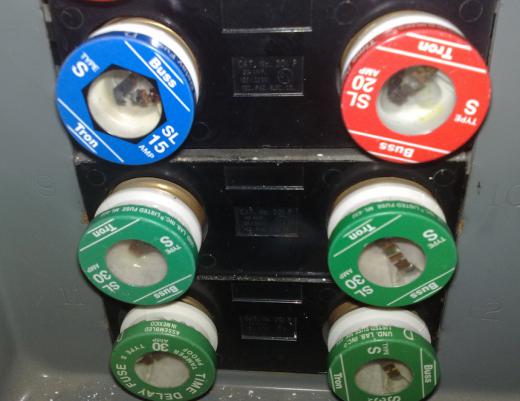AMP load refers to the amount of demand an electrical circuit puts on a power source, such as a battery or the circuit breaker between the electrical item and the power line that runs to a house or building. An AMP, short for ampere, represents a unit of measure for the amount of electrical current charge required by an electrical appliance per second of use. In most cases, this term is in direct reference to battery-powered appliances and the amount of time the battery will power the device during its use. Batteries are rated as being capable to handle a specific range of ampere usage, or AMP load, by how long they will power the item if the item requires a 1 AMP load to power itself effectively.
For instance, a battery with an ampere-hour rating of 16 Ah will power a device requiring a 2 AMP load for eight hours before needing recharging or replacing; likewise, if the device requires a 1 AMP load, then the battery will power the device for 16 hours before the battery will not be able to effectively power the device. Rechargeable batteries are usually much more efficient than replaceable batteries, especially in devices that require more than a 2 AMP load. The actual AMP load required by the device depends on the function of the device itself and how much power the device requires at a constant rate in order to function effectively.

Fuses are similar in concept to AMPs but are used to regulate the current sent to a device that requires a constant streaming of power from an open power source. Fuses are rated in terms of the amount of amperes the fuse can handle before overloading. In most houses, the use of fuses has been eliminated and circuit breakers have been installed in order to regulate power delivery. This is because a circuit breaker doesn’t need to be replaced every time the circuit is overloaded by a power surge or by the device being used requiring too high an amperage for that particular circuit to handle.

When a circuit breaker is overloaded, the breaker automatically interrupts the circuit, stopping the delivery of power to the device in order to prevent damage to either the device or any hardware used to deliver power to the device from the original source. Fuses, on the other hand, stop the delivery of power to the device by overheating, or “blowing,” and thus stopping the circuit from completing to the device. A fuse must be replaced with a new one if it blows, while a circuit breaker typically only requires the switch on the breaker to be turned back on.
